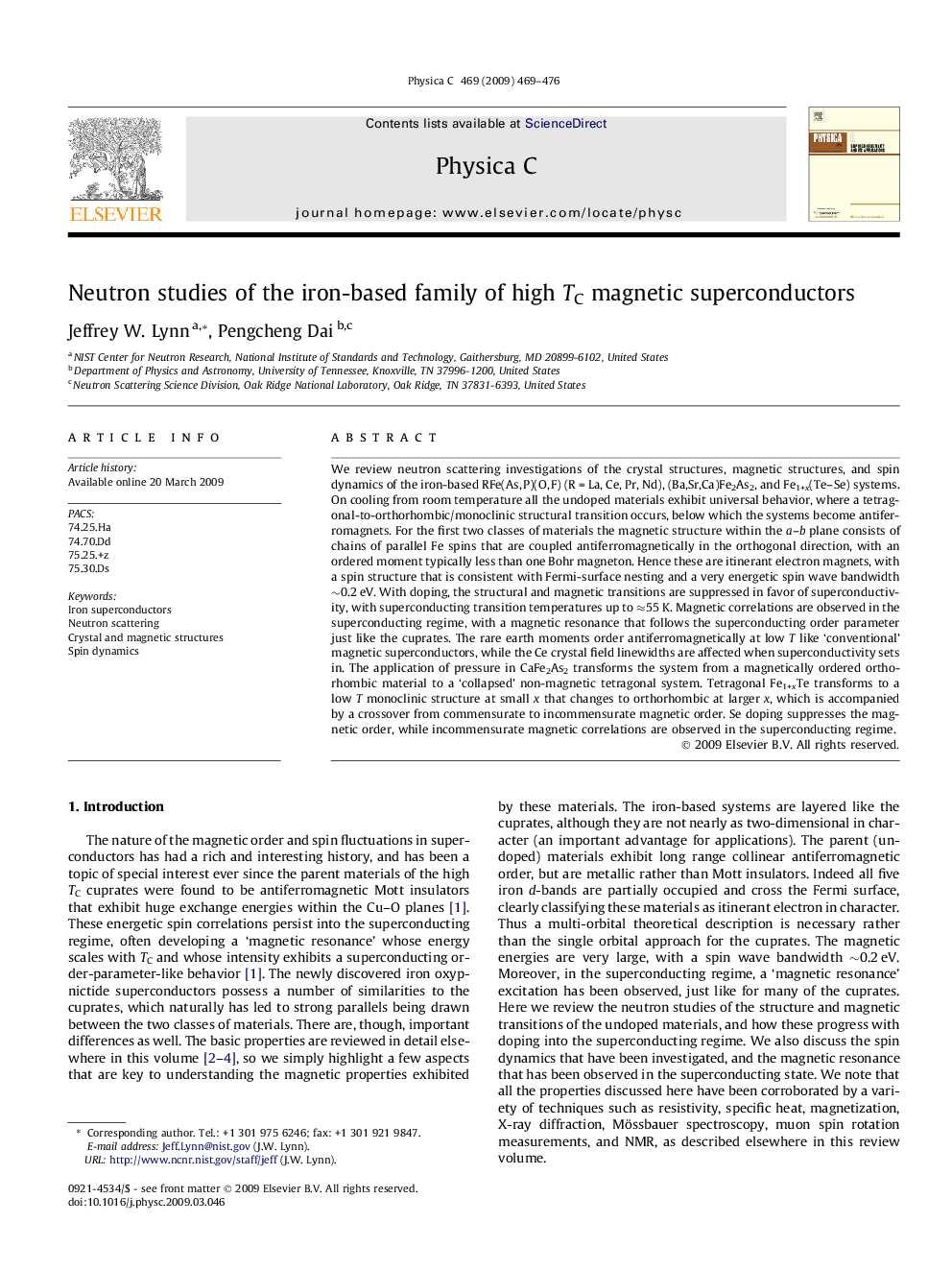| Article ID | Journal | Published Year | Pages | File Type |
|---|---|---|---|---|
| 1819112 | Physica C: Superconductivity and its Applications | 2009 | 8 Pages |
We review neutron scattering investigations of the crystal structures, magnetic structures, and spin dynamics of the iron-based RFe(As, P)(O, F) (R = La, Ce, Pr, Nd), (Ba,Sr,Ca)Fe2As2, and Fe1+x(Te–Se) systems. On cooling from room temperature all the undoped materials exhibit universal behavior, where a tetragonal-to-orthorhombic/monoclinic structural transition occurs, below which the systems become antiferromagnets. For the first two classes of materials the magnetic structure within the a–b plane consists of chains of parallel Fe spins that are coupled antiferromagnetically in the orthogonal direction, with an ordered moment typically less than one Bohr magneton. Hence these are itinerant electron magnets, with a spin structure that is consistent with Fermi-surface nesting and a very energetic spin wave bandwidth ∼0.2 eV. With doping, the structural and magnetic transitions are suppressed in favor of superconductivity, with superconducting transition temperatures up to ≈55 K. Magnetic correlations are observed in the superconducting regime, with a magnetic resonance that follows the superconducting order parameter just like the cuprates. The rare earth moments order antiferromagnetically at low T like ‘conventional’ magnetic superconductors, while the Ce crystal field linewidths are affected when superconductivity sets in. The application of pressure in CaFe2As2 transforms the system from a magnetically ordered orthorhombic material to a ‘collapsed’ non-magnetic tetragonal system. Tetragonal Fe1+xTe transforms to a low T monoclinic structure at small x that changes to orthorhombic at larger x, which is accompanied by a crossover from commensurate to incommensurate magnetic order. Se doping suppresses the magnetic order, while incommensurate magnetic correlations are observed in the superconducting regime.
